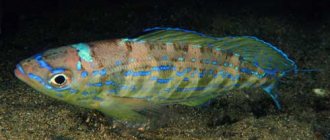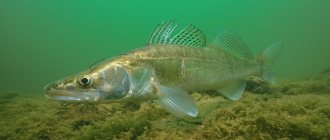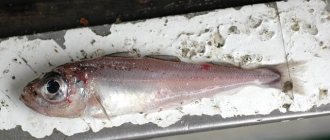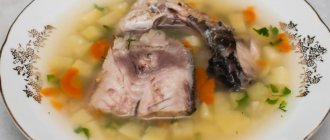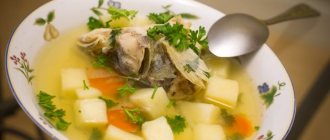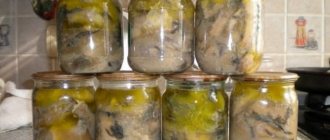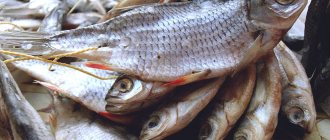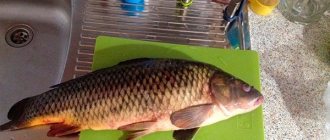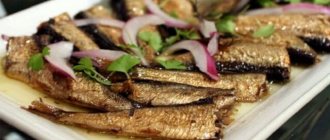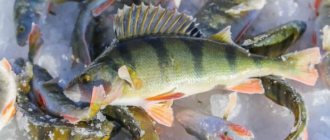Flounder fish: description
Due to the fact that the eyes of this order are located on the right side, they are also called “Right-sided flounders”. It is also known that there are forms of flounder in which the eyes are located on the left side of the head. The symmetrically located pelvic fins have a rather narrow base.
All varieties of flounder are characterized by general data, such as:
- Having a flat body shape.
- Elongated dorsal and anal fins with many rays.
- Asymmetrical head.
- Closely spaced, convex eyes that can function independently of each other.
- The lateral line that runs between the eyes.
- A slanted mouth and fairly sharp teeth.
- Quite a short tail.
- The opposite side is distinguished by its light color and strong, rough skin.
Flounder eggs are distinguished by the fact that they do not have a fat drop, so they are suspended in the water column, where the development of future offspring occurs. Five species of flounder prefer to spawn in the bottom region.
Interesting moment! The ability of this family to mimicry allows them to skillfully camouflage themselves, regardless of the complexity of the background color. At the same time, “Flounders” are not inferior in their camouflage capabilities even to a chameleon.
Appearance
All varieties of flounder prefer to lead a benthic lifestyle at considerable depth. Their characteristic distinguishing feature is the presence of a thin, oval or diamond-shaped body, as if flattened laterally.
River flounder (Platichthys flesus) is a term that defines such species of flounder as Star, Black Sea (kalkan) and Polar.

- The star flounder is distinguished by the fact that it is characterized by a left-sided position of the eyes. In this case, the fish has a dark, greenish or brown body color, with wide black stripes on the fins and spiked star-shaped plates. This is typical for the side where the eyes are located. The fish grows up to 60 cm in length and can weigh up to 4 kilograms.
- Black Sea Kalkan . Represents a flounder with left-sided eyes. On the round-shaped body you can see many tuberous spines, which are randomly scattered throughout the body on the left side. The main body color is brown-olive. Flounder grows to a length of more than one meter, gaining weight up to 20 kilograms.
- Arctic flounder . It is a cold-resistant representative of a large family. It is distinguished by an elongated oval-shaped body. The body color is uniform and made in dark brown tones, while the color of the fins has a brown tint.
Varieties of sea flounder thrive in salt water, in addition, they are distinguished by the fact that they have a wide range of data regarding their size, body shape, fin color, as well as the location of the eyes.

- The common flounder has a basic color of brown-green, with spots of a reddish or orange tint. Adult specimens can weigh up to 7 kilograms and grow up to 1 meter in length. The species has excellent capabilities in terms of mimicry.
- White-bellied southern and northern flounder are marine fish that lead a bottom-dwelling lifestyle. They can grow up to half a meter in length. A characteristic feature of this species is the presence of a bifurcated lateral line, arched in shape. The lower part of the fish's body is milky in color, and the upper part is brown or wheat-brown.
- Yellowfin flounder is a cold-loving species. The body is round in shape, covered with scales with tiny spines. The fins have a yellow-golden hue. Adult specimens grow up to 0.5 meters in length and weigh no more than 1 kilogram.
- Halibut . The variety is represented by 5 species. Some of them are up to 4 and a half meters long and weigh up to 350 kilograms. The arrow-toothed halibut is considered the smallest representative, with a length of no more than 0.8 meters and a weight of about 8 kilograms.
The name Far Eastern flounder is applied to individual subspecies representing the so-called flat fish.
This fish came straight out of a Picasso painting - Tropical flounder botus
Character and lifestyle
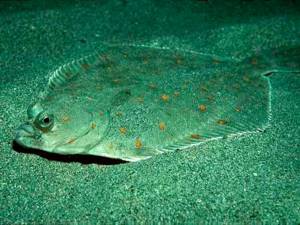
These fish prefer to lead an isolated bottom lifestyle, and they are able to camouflage themselves very skillfully, depending on the nature of the surrounding landscape. They spend most of their lives in a lying position either on the surface of the soil or in the thickness of the soil, burying themselves in it almost completely, with the exception of their eyes, which are always on the surface. This type of life activity allows the fish not only to reliably hide from its enemies, but also to obtain food for itself by attacking its prey from a kind of ambush.
At first glance, it seems that this fish is slow and clumsy, since it is mainly seen slowly moving through the water column, at a considerable distance from the bottom. In fact, if necessary, a flounder can demonstrate its skills by instantly gaining decent speed.
In case of danger, the fish makes an instant leap forward several meters due to a very powerful jet of water, which is formed by the gill cover. This jet literally “shoots” into the bottom area. As a result, a cloud of turbidity is formed, which gradually settles to the bottom. During this time, the fish manages to grab its prey or escape from the predator.
How long does flounder live?

Flounder can live, if favorable conditions are created for this, for at least 30 years. Being in the natural environment, flounder rarely survives to such a respectable age, since the bulk ends up in industrial fishing nets.
Sexual dimorphism
Male flounder can be distinguished from females by several characteristics. Firstly, they are smaller in size and weight, and secondly, they have a larger distance between the eyes. In addition, they have longer rays of the pectoral and dorsal fins.
River flounder
The species Platichthys flesus, large in population but poor in related taxa, has successfully acclimatized for permanent residence in fresh and slightly salty water. It is distinguished by a rounded body and spines on the lateral line. The sighted side has a dull brown or olive-brown color with chaotic yellow and dark specks. It will grow up to 3 kg with a body length of 50 cm.
For full development, the clutch of flounder must constantly receive a fresh supply of oxygen due to drift in the water column (pelagic eggs). But this is only possible in a dense salty environment (from 10 ppm). In freshwater rivers, the larvae do not maintain buoyancy, sink to the bottom and die, so the fish go to sea to spawn.
To learn more:
Vobla - what kind of fish, description and way of life
The cool Baltic is ideal for these purposes with a vast basin, low salinity (11-12%), a long coastline, moderate depths of 30-50 m and a rich food supply. The river species is also officially called the Baltic flounder due to its wide distribution in the coastal zone, inflowing rivers and the sea.
Star flounder
The species Platichthys stellatus lives in the northern waters of the Pacific Ocean (Bering, Okhotsk, Chukchi, Sea of Japan). The freshwater form inhabits lagoons, bays and lower reaches of rivers (150-200 km from the mouth). It has left-sided eyes, dark color (greenish, brown), wide black stripes on the fins and star-shaped spiked plates on the eye side. Due to its distribution, the taxon is also known as the Pacific river flounder. The usual size of the fish is 50-60 cm and weighs 3-4 kg. There are frequent cases of catching large individuals weighing 7-9 kg (75-90 cm).

Black Sea Kalkan
The fish is similar to flounder, but belongs to a separate family called Scophthalmidae. Inhabits the North Atlantic and the Black, Baltic, and Mediterranean seas. It grows over a meter in length and weighs up to 20 kg. It is distinguished by the left location of the eyes, its round shape and a large number of tuberous spines scattered over the entire surface of the brown-olive sighted side. In addition to the marine environment, it thrives in the lower reaches of the Dnieper, Southern Bug, and Dniester. Due to the increased salinity of the Sea of Azov due to the shallowing of the inflowing rivers, the Black Sea flounder has spread to the mouth of the Don. A smaller subspecies also lives here - the Azov diamond, which will grow in length to 40-45 cm.
Arctic flounder
A cold-resistant Arctic species (Liopsetta glacialis) with an elongated oval body of a uniform dark brown color and brick-colored fins. Prefers soft silty soil. Inhabits the Kara, Barents, White, Bering and Okhotsk seas. It reproduces in winter under ice, at negative water temperatures (down to -1.5°C). Often the warm feeding season is spent in the low-salt lower reaches of Siberian rivers. Found everywhere in the Kara, Yenisei, Ob, Tugur.
Types of flounder
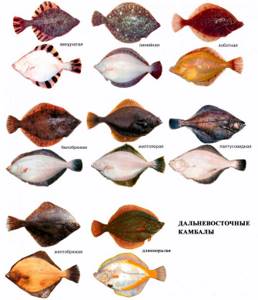
The currently known 60 species of flounder are represented by 23 genera:
- The spiny flounder genus includes the Spiny flounder and the Reliable flounder.
- The genus of arrowtooth halibut is represented by the Asian arrowtooth halibut and the American arrowtooth halibut.
- The genus of sharp-headed flounder includes the Herzenstein flounder and the sharp-headed flounder.
- The genus Warty flounder consists of one species called Warty flounder.
- The genus Eopsetta is represented by the Far Eastern flounder (Grigoriev's flounder) and Jordan's flounder.
- The genus "Long flounder" consists of such species as the Red flounder and the Far Eastern long flounder (Steller's smallmouth).
- The genus of halibut flounder consists of such species as Japanese halibut flounder (Japanese flounder), Northern halibut flounder, Ruff flounder and Bering Sea flounder.
- The genus "Halibuts" (white halibuts) consists of the Atlantic halibut and the Pacific halibut.
- The genus of two-colored flounder and two-lined flounder is represented by such species as the white-bellied flounder and the northern two-lined flounder.
- The Limanda genus includes several more species and is represented by the yellowfin flounder, yellow-tailed Limanda, Ruffed Limanda, Long-snouted Limanda and Sakhalin flounder.
- The genus “Polar flounder” is represented by one species – the naked-headed flounder.
- Genus "Oregon flounder".
- The genus Smallmouth Flounder is represented by several species, including smallmouth flounder and Pacific smallmouth.
- The genus “River flounder” is also represented by several species, including the Star flounder.
- The genus "Sea flounder" includes several species, including the species Yellow sole.
- The genus of hardhead flounder includes the species Horned Flounder.
- Genus of spotted flounder.
- The winter flounder genus includes species such as Yellowband flounder, Schrenk flounder and Japanese flounder.
You should pay attention to such genus as Dexists and Embassichts, which includes the Deep-sea Embassicht, as well as the genus Isopsets, Veraspets, Tanakius, Psalmodiscus, Parophrys and Black Halibuts.
Interesting to know! Halibuts are considered the largest representatives of the family that live in the Pacific and Atlantic oceans. Halibuts live for about half a century, populating great depths.
Habits
It doesn’t matter whether the flounder is freshwater or saltwater, all representatives of this family are very poor swimmers. Sensing danger, the fish turn over on their edge and quickly swim away in this position. As soon as the danger has passed, they sink back to the ground and burrow.
Depending on where the flounder lives, it is capable of changing its color at lightning speed, acquiring the desired shade. The color of the fish depends primarily on the color of the seabed and its pattern. When changing, flounder achieves such colors as to be practically invisible. This kind of adaptability is called mimicry. But not all representatives of this genus have this property, but only those that see. Having lost its sight, the fish will no longer be able to change the color of its body.
Flounder is a sea fish whose size ranges from a few grams to three hundred kilograms. Its weight and size depend primarily on the type. Some individuals reach four meters in length. Many of us have heard of halibut, but everyone knows that it is flounder. What kind of fish - river or sea - is certainly not known to many. Meanwhile, halibuts are the largest flounder that live in the Pacific and Atlantic oceans. A fish weighing 363 kilograms was recorded, and this is the largest value known to science. An interesting fact is that this species of flounder can live up to fifty years of age. In addition, flounder is a valuable marine commercial fish.
Natural habitats
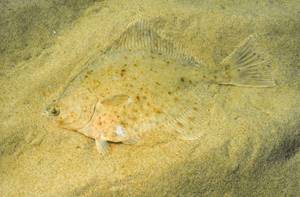
Some species have shown a preference for the northern latitudes of the Pacific depths, with many of them found in the Seas of Japan, Bering, Okhotsk and Chukchi Seas. For freshwater forms, typical habitats are lagoons, lower reaches of rivers and bays. For some species, distribution within the northern latitudes of the Atlantic, as well as within the waters of the Black, Baltic and Mediterranean seas is considered typical. Some species thrive not only in the marine environment, but also in the lower reaches of rivers such as the Southern Bug, Dnieper and Dniester. Due to the fact that the Sea of Azov has recently become too salty, and the inflowing rivers have become noticeably shallower, the Black Sea flounder kalkan chose to migrate to the mouth of the Don River. Cold-resistant species, as a rule, live in arctic latitudes, found in the waters of the Kara, Barents, White, Bering and Okhotsk seas. At the same time, they swim into rivers such as the Yenisei, Ob, Kare, Tugura, where they prefer places with soft silty soils.
Marine varieties of flounder inhabit low- and high-salinity waters, living at depths up to 200 meters inclusive. Many of the species are considered valuable commercial fish, and they are found in the waters of the Eastern Atlantic, as well as seas such as the Mediterranean, Barents Sea, White and Baltic. The southern white-bellied flounder is characterized by its distribution in the waters of the Sea of Japan, and some northern subspecies are limited to the waters of the Okhotsk, Kamchatka and Bering seas.
Interesting moment! Flat fish are distinguished by rich species diversity and enormous biological flexibility, which allowed them to spread across territories located along the entire Eurasian continent, as well as in the waters of inland seas.
Yellowfin flounder is widespread in the waters of the Sea of Japan, Okhotsk and Bering Sea. Large populations of this species are distributed within Sakhalin and the western waters of Kamchatka, where they live at depths of up to 80 meters, preferring the benthic region. Typical habitats for halibut fish are the waters of the Arctic Ocean and the Pacific Ocean, including the waters of the Barents Sea, Bering Sea, Okhotsk and Japan Seas.
Sea flounder
The salty environment is home to dozens of species of flat fish that thrive both on the shallow coastal shelf and at depths of several kilometers. They are characterized by a wide variation in size, body shape, fin color, sighted and blind sides.
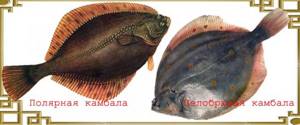
Common sole
The basic taxon (Pleuronectes platessa), living in low- and high-salinity water (10-40%) at depths of 30-200 m, is an important commercial fish object. Inhabits the Eastern Atlantic, Mediterranean, White, Barents, Baltic and other seas. The main color is brown-green with reddish or orange spots. It grows up to 6-7 kg, maximum size up to 1 m. It has well-developed mimicry.
White-bellied flounder
Sea bottom fish that grows up to half a meter. The minimum commercial size is 21 cm. Features of appearance are an arched diluted lateral line, milky color of the blind side, brown or wheat-brown color of the eye side. There are two subspecies:
- Southern white-bellied flounder (Lepidopsetta bilineata mochigarei) lives in the coastal zone of Primorye and the Sea of Japan.
- Northern (Lepidopsetta bilineata bilineata) - in the waters of the Kamchatka, Okhotsk and Bering seas. Both form large populations in Peter the Great Bay (southern Primorsky Krai) and the Strait of Tartary, which separates Sakhalin from the mainland.
To learn more:
Haddock: sea fish or river fish?
Yellowfin flounder
A cold-loving species (Limanda aspera) from the genus Limanda, which is common in the Sea of Okhotsk, Japan and Bering Sea. Fish are plentiful off the western coast of Kamchatka and Sakhalin. Prefers depths of 15-80 meters, where it adheres to sandy soils. Other common names for the taxon - spiny limanda and red flounder - are given because of the spiked scales and rounded brown body framed by yellow-golden fins. The maximum size is 45-50 cm with a weight of 0.9-1.0 kg.
Far Eastern flounder
Collective name for a dozen taxa of flat fish. In addition to the yellowfin, star and white-bellied forms, there are two-lined, long-snouted, proboscis, halibut, yellow-bellied, warty and others. It is the northern territories that provide the majority of the world's catch of flounder.
Halibut
Three genera represent 5 species living in the Atlantic and the extreme waters of the Pacific and Arctic Oceans (Barents, Okhotsk, Bering, Sea of Japan). The largest size is the white halibut (Pacific - Hippoglossus stenolepis, Atlantic - Hippoglossus stenolepis), which grows in length up to 450 cm and weighs 350 kg.
The smallest representative of the genus is the arrow-toothed halibut (American - Atheresthes stomias, Asian - Atheresthes evermanni), rarely gaining weight over 7-8 kg with a length of 70-80 cm. The main biological feature of the taxon includes scales, like on a sighted one (ctenoid with denticles along the edge ), and on the blind (cycloid with a smooth edge) sides. The black halibut (Reinhardtius hippoglossoides) has intermediate dimensions, for which the record is 35-40 kg with a height of 125-130 cm.
Big diamond
Another fish similar to flounder is a representative of the Kalkan family - the sea pheasant, or turbot (Scophthalmus maximus), with a large body without a covering of scales. Instead, nature has provided a protective mechanism in the form of many bone spines. Due to the angular shape of the fins and outstanding size (up to 1 meter in length), the fish is also known as the large diamondfish. Sea pheasant is a valuable commercial species and is widely reared on farms in Spain, Portugal, France, Iceland and China. The natural range of turbot flounder includes the Baltic, North, and Mediterranean seas.

Sole
The scientific name of the species is European solea (Solea solea). The heat-loving fish belongs to its own genus Soleidae and lives in the eastern Atlantic, Red, Mediterranean, South China, Baltic and Black Seas. Grows up to 65-70 cm with a weight of 2.5-3.0 kg. It has the status of a world delicacy thanks to its tender, tasty and juicy meat with a minimum of bones. The European salt is characterized by an elongated leaf-shaped body, which is complemented by an asymmetrical head with an oblique mouth and right-handed eyes. The sighted side is pale brown with many dark spots and covered with small scales.
To learn more:
Halibut: types of fish, differences and lifestyle features
Under the trade name “sea tongue,” dishonest sellers often sell not only fillets of less valuable flounder fish, but even pangasian catfish, which are generally representatives of freshwater ichthyofauna.
What does flounder eat?

These fish go hunting either at dusk, or at night, or in the morning. Flounder is considered a predatory fish, so its diet consists of animal foods. At a young age, individuals feed on benthos, amphipods, various worms, larvae, crustaceans and eggs. As they grow older, flounder switches to larger worms, brittle stars, echinoderms, as well as small fish, many invertebrates and crustaceans. Particularly popular among representatives of this family are shrimp and medium-sized capelin.
Due to the structural features of the body, which is associated with the lateral position of the head, this fish can easily reach various mollusks from the thickness of the sea or river bottom. At the same time, it should be noted that the jaws of the flounder are strong and powerful, so the fish can easily deal with even the shells of crabs. Due to the fact that the family feeds on food items high in protein, fish is of great value.
Diet
Flounder feeds very variedly. It can be classified as a predatory fish. The basis of nutrition consists of worms, mollusks and small crustaceans. But small fish that swim near the shelter are also often eaten. The fish does not like to leave it, so as not to become prey itself.
Despite the fact that flounder is a predator, fishermen prefer to use natural bait. To do this, they take worms or shellfish meat. For a fish to pay attention to its potential prey, it must be right under its nose. Otherwise, she is unlikely to come out of hiding, even to eat.
Reproduction and offspring

The periods of spawning largely depend on living conditions, which is associated with the onset of spring, warming up of the water column, etc. As a rule, many species spawn between the first ten days of February and May, although there are some exceptions.
The large diamondfish (turbot) prefers to spawn in the waters of the Baltic and North Seas, starting from April and including the month of August. As for the polar flounder, the process of its spawning occurs in the water column covered with ice, and the period occupies the period from December to January inclusive.
Depending on the species, the ability to reproduce occurs after a minimum of 3 years of life. Many species are characterized by a high degree of fertility, so the number of eggs in a clutch can range from several hundred thousand to several million. As a rule, the period of development of eggs takes no more than a couple of weeks. To spawn, flounder chooses places with sufficient depth and a sandy bottom.
Important point! The flounder fry that are born have a body shape that is familiar to fish, since they are characterized by symmetrically developed sides, since the eyes are located classically, on both sides of the head. Frying flounder eat zooplankton and other small food items.
Some species prefer areas up to 50 meters deep, which is due to the excellent buoyancy of the eggs, as well as the lack of need for attachment to any foundation.
Giant turbot fish underwater. Giant halibut/flounder underwater.
Six interesting facts about flounder
The body length of adult individuals, depending on the species, ranges from 6 cm to 1.5 meters, females are larger than males.
The color depends on the habitat, usually brown with various red, orange, green and blue markings on the body, the flounder can change it to blend in with the colors of the environment, the video shows this happening within 2-8 seconds.
The eyes can move independently of one another; depending on their location, the fish are divided into two main types: right-sided and left-sided flounder.
The female releases up to 100,000 eggs into the water at the same time she releases sperm. The larvae (fry) hatch from the fertilized eggs a couple of weeks later.
This is a nocturnal predator, it lies motionless in ambush, waits for a potential victim to appear and grabs it in the blink of an eye. A well-camouflaged flounder is protected from numerous live swallows when lying motionless on the seabed.
The transformation of larvae into juveniles (metamorphosis) begins a couple of days after hatching. The body begins to straighten out, the dorsal and rear fins become more elongated, and the young fish loses its swim bladder (this provides the buoyancy necessary for active swimming).
FACT: They are meat eaters, eating: shrimp, crabs, worms, small fish. Natural enemies include sharks, eels, striped bass, spiny catfish and people; in the wild, the lifespan ranges from 3-30 years.
Natural enemies

Thanks to its abilities, the flounder fish changes its body color depending on the color of the bottom of the reservoir. This allows the fish to go unnoticed by many predators. This does not mean that the fish is completely devoid of natural enemies. The most dangerous for it are halibut, eel and humans. The fish has quite tasty, delicious meat, so it is caught in large quantities in all areas of the World Ocean.
Life cycle and reproduction
River flounder can live 20-25 years, but rarely reaches this age, since it is a commercial fish. She becomes sexually mature at 3-4 years and goes to spawn in February-May. To do this, the fish goes to sea, covering vast distances. Salt water is an important factor in its reproduction. If spawning occurs in a freshwater body of water, the larvae will sink to the bottom and die. For the development of eggs, fresh oxygen is necessary; such conditions are only possible in water with a salinity of over 10 ppm.
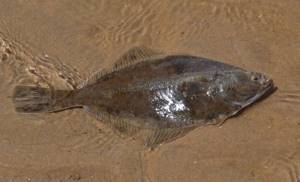
River flounder can live 20-25 years, but rarely reaches this age, since it is a commercial fish
Flounder lays up to 2 million eggs at a depth of 25-40 meters. They swim close to the surface for some time. After about 11 days, the larvae hatch. They feed on plankton and other small organisms near the surface. Interestingly, the fry look symmetrical and swim like ordinary fish; metamorphosis occurs later.
As the fish grows, it releases air from its swim bladder and lies on the bottom, usually on its left side. At the same time, the body begins to change - the left eye moves, and the skin on the upper side darkens.
Population and species status

Currently, there are many problems associated with everyday fishing for many valuable fish species. The main problem is related to overfishing of easily accessible and, especially, scarce species. This problem has deep roots and is associated with multi-species fisheries. Unfortunately, it has not yet been possible to solve this problem. The total number of flounder depends on many natural factors, so experts note a certain cyclicity, characteristic both for conditions of declining and increasing populations.
These factors include the constant negative impact of humans associated with their life activities, including the fact that humans exert enormous pressure as a result of commercial, uncontrolled fishing. As an example, we can take the Arnoglos Mediterranean flounder and the Kessler flounder, which are on the verge of complete extinction, so their total numbers are extremely small.
Interesting Facts
The description of the flounder does not fully reveal all its amazing abilities and interesting facts . Here are some of them:
- This fish was even found in the Mariana Trench - a place with enormous pressure where other species are unable to survive.
- In most cases, the eyes of flounder are located on the right side of the body, but non-standard individuals are also found.
- The lateral position of the head helps it gnaw mollusks directly from the ground.
- She masterfully changes her color. If you put a chessboard on the bottom, it will be covered with symmetrical dark and light spots.
- Mimicry is only possible for sighted fish. A blind fish loses the ability to camouflage itself.
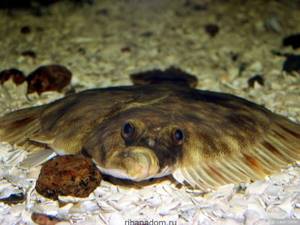
In most cases, the eyes of a flounder are located on the right side of the body. - The skeleton is better developed in the upper part of the body.
- Flounders can interbreed with each other and then the offspring acquire the characteristics of both parents belonging to different species.
- The skin on the lower side of the individual is more durable; it protects the fish from damage from stones and soil.
- Flounder meat is considered an aphrodisiac.
Tender meat and the absence of bones make flounder dishes quite popular . Meat is valued for its beneficial properties and taste with low calorie content and is often used in medicinal diets.
You can cook in various ways: steam, boil, fry, smoke, bake. However, in order to preserve the taste and nutrients, it is recommended to use gentle processing.
Flounder in cooking

Flounder meat is rich in proteins, while the amount of fat is insignificant, which makes it possible to include the meat of this fish in the diet. The energy value of fresh fish is 90 kcal per 100 grams of meat, and boiled flounder is 103 kcal per 100 g of product. Fried fish has the largest number of calories - about 223 kcal, so fried flounder is not suitable as a dietary dish, since there is a high probability of gaining extra pounds.
Flounder meat is quite tasty, but if it is cooked incorrectly, you can end up with a dish with a specific smell. To prevent this from happening, the flounder must be skinned, the head cut off, and the entrails removed.
Harm and benefit to humans
Fishing for flounder
Nutritionists consider flat fish a medicinal product.
The composition of valuable substances makes flounder useful for diseases such as:
- hypothyroidism;
- cardiovascular diseases;
- chronic gastritis;
- cholecystitis;
- autoimmune diseases;
- chronic fatigue syndrome;
- anemia.
The benefits of flounder
In addition to dietary nutrition for chronic diseases, flounder is good in a regular diet.
Its beneficial properties provide:
- gaining useful weight during pregnancy;
- rapid recovery after serious illnesses;
- cancer prevention in older people;
- increasing mental performance and memory in schoolchildren and students;
- increased sexual desire;
- improving the structure of hair and nails;
- cleansing the skin, increasing its turgor.
Damage to flounder
Fish, as a rule, is not harmful to health. The health value of fish depends on the method of preparation. Flounder loses most of its beneficial properties when salted, smoked, or canned.
Flounder prepared in these ways can harm various organs of the human body:
- salted flounder retains fluid in the body, leading to edema and unhealthy weight gain;
- salted flounder puts excessive stress on the kidneys;
- salted and dried flounder concentrates salt in the joints, which leads to arthritis;
- smoked and canned fish are the source of carcinogens.
Important! Dried flounder without salt retains almost all valuable substances. But dried fish should not be eaten by people with gastrointestinal diseases.
Description of individuals
Representatives of the flounder family live on average 20-30 years and have a rather unusual and interesting appearance, which makes it possible to distinguish it from other varieties of fish. The main distinguishing features are the following:
- the body is flat and plate-like, completely framed by a fin with many rays;
- asymmetrical head, turned to the right or left;
- eyes are closely spaced and function separately from each other;
- the slanted mouth has many sharp teeth;
- on the side of the body where the eyes are located, the scales are of a darker shade, and there is also a wide gill slit;
- the tail is very short and equipped with a fin without notches;
- the side that is devoid of eyes has a lighter shade and dense skin.
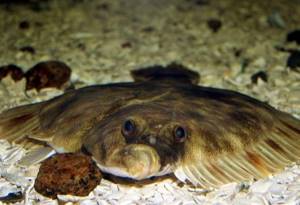
To survive in the sea and river, flounder has learned to adapt to any landscape and change body color
At birth, fish fry have the same structure and appearance as all other fish. But gradually irreversible metamorphoses occur, which lead to a shift of the mouth and eyes to the right side of the head.
After transformation, the fish turns over to the blind side , which gradually atrophies and begins to be used by the flounder as a flat belly for the convenience of lying on rocks and the bottom. But in river flounder, the changes occur in the opposite order - the eyes and mouth move to the left side of the head.
To survive in the sea and river, the fish has learned to adapt to any landscape and change body color. Because of this, it is often called the “water chameleon.”
